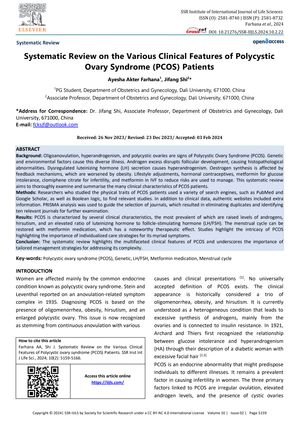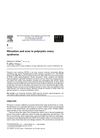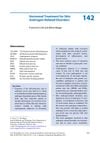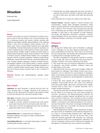Systematic Review on the Various Clinical Features of Polycystic Ovary Syndrome (PCOS) Patients

TLDR PCOS has many symptoms, with high androgen levels being the most common.
The systematic review of ten studies on PCOS highlights its multifaceted nature, with increased androgen levels being the most frequently observed feature in 70% of the studies. Hirsutism was prevalent in 60% of the studies, and metabolic implications such as increased waist-to-hip ratio and elevated lipid levels were reported in 50% of the studies. Serum testosterone levels and acne were significant in 30% of the studies. Metformin's effectiveness in restoring regular menstrual cycles was noted in 10% of the studies. Less frequently documented features included increased plasma estradiol levels, alopecia, and male pattern hair loss (20% of the studies), and acanthosis nigricans (30% of the studies). These findings underscore the importance of tailored management approaches to address the complex nature of PCOS effectively.




